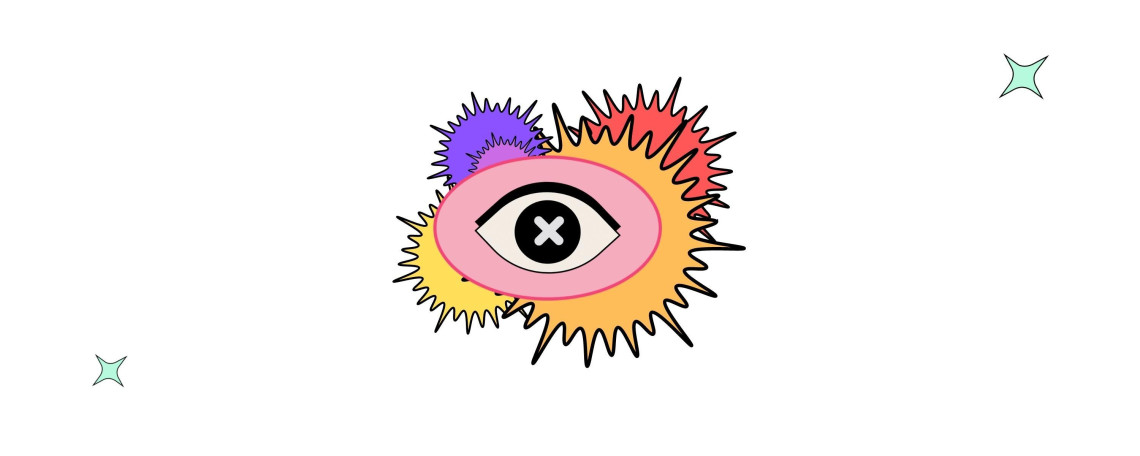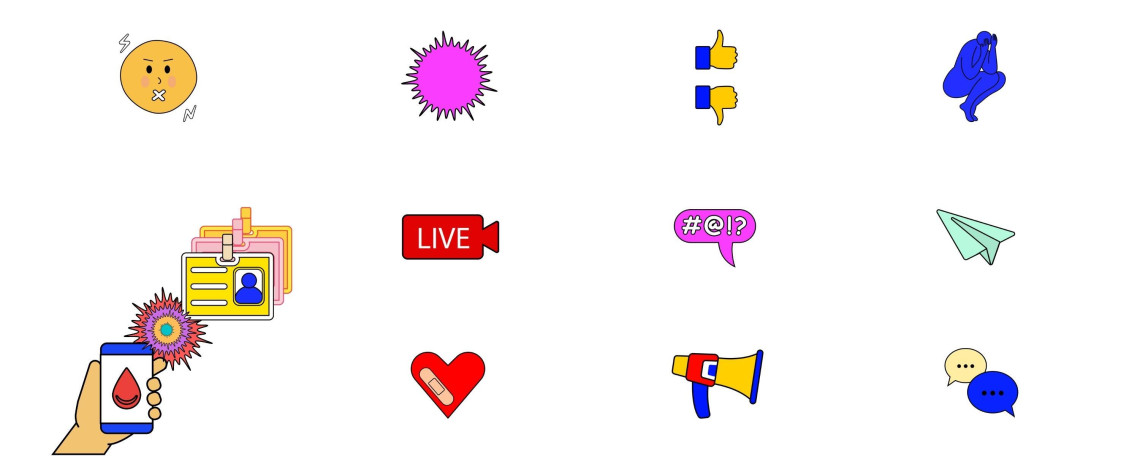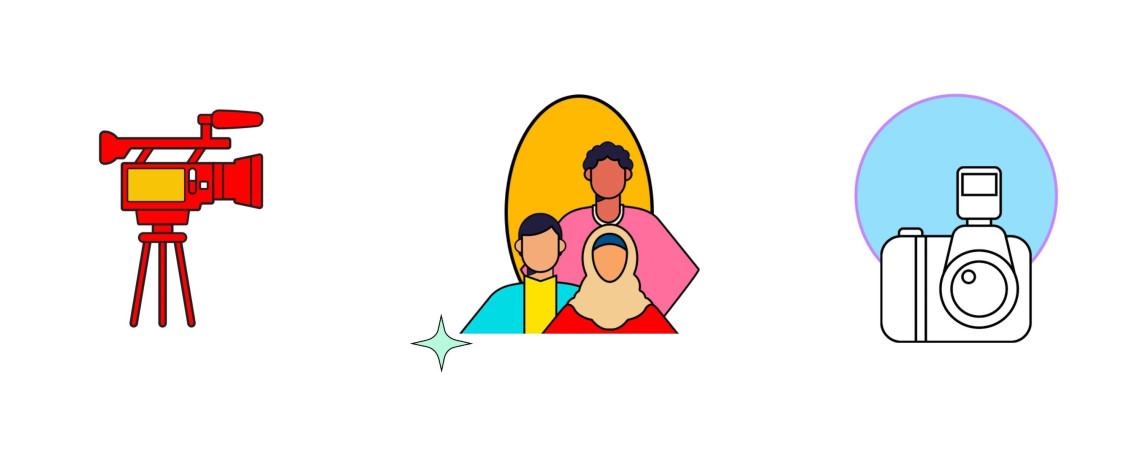
How to deal with traumatic imagery as a communicator

At the core of a workplace's trauma sensitive practices are safety concerns which can directly impact a person's ability to communicate.
The following resources are a guide that will help ensure trauma sensitive practices for people who manage, produce, publish, disseminate or include visual content in communications. Although the focus is on communicators and managers, the information can be adopted by any professional whose job entails dealing with visual content.
This resource toolkit was developed following two workshops on trauma sensitive visual content management held jointly by the International Committee of the Red Cross and the Dart Centre for Journalism and Trauma Asia Pacific, in Australia in August 2022.
The guides can be downloaded below and viewed on this webpage.
What is trauma?
- It can be a very personal experience
- It can be direct or indirect (vicarious) exposure
- Any event that involves experiencing or witnessing actual or threatened death, serious injury, or violence, has the potential to be traumatic
- The way a person reacts to trauma depends on many things, such as the severity of the traumatic event, the support available, previous traumatic experiences, and a person's skills to mitigate trauma dangers
- The impact and reactions can be personal, intimate and can make a person feel vulnerable and lacking self-expression
More information can be found at The Dart Center Style Guide for Trauma-Informed Journalism here

Content moderators
The work location of content moderators is often removed from immediate physical danger, but this does not shield you from encountering trauma threats, especially vicarious trauma threats. On the contrary you could find yourself in a situation where you frequently encounter intense, mostly digitised, vicarious trauma threats as your job is to curate the content traffic.
The first step in creating safe workspaces is gaining control of the speed, quantity, and quality of the content that you are likely to be exposed to and the scenarios where these encounters are likely to take place.
To help you do this, consider your context of consumption:
Workload
- Does your workload feel overwhelming? Can you maintain your workload?
- Create routines and breaks that allow you to return to work refreshed. These breaks would work best if they were planned to fit into the daily work routine as well as longer work routines.
Work content
- Are you encountering graphic or disturbing content at a high rate? Content may not be graphic or violent but still can create uneasiness or be disturbing to you. If you feel like this, create breaks from the content.
- Make sure you manage your devices and digital resources like social media in such a way that allow you to deal with work-related content within specific time periods. This could mean switching off notifications out of work hours, having a separate work phone, having warnings for content types.
Work location
- Where we work matters. Is the place you work creating its own pressures? Are you working in a dark corner that makes you feel boxed-in? If yes, consider a change or talk to your manager about making a change.
- Create a work location that makes it comfortable for you to work. Some of us like ambient music, some of us like silence, others like to work facing open space – you know what works best for you, find that out and adapt it.
- If your work extends outside of the workplace consider the location, time and equipment where you are consuming this material and create boundaries between your work and personal consumption.
Cyclic nature of your work
- Do you take a break from constant streams of content? It is important to proactively create and implement practices that allow us to break the cyclic nature of content delivery.
- Think about creating long and short breaks. As much as technology can be intrusive, it can also be controlled. Consider your usage of equipment, notifications, auto-updates, and connectivity.
- Start with small interventions to break the cycle like taking a short break from the screen every hour – walk away from the screen and come back after 10 minutes. Once you have become accustomed to taking these breaks, you can start applying more stringent interventions.
- Pay attention to where you use social media profiles and for what purpose. As mentioned above, create, and implement specific time periods and locations where you engage with work related content.
Communicate with your colleagues and managers
- If your work is intruding on your life outside of work, inform your work colleagues and managers, so that remedial action can be taken.
- Even if work does not feel overwhelming, an open, frequent dialogue among staff on work related issues will support a healthy personal and community work atmosphere.
More resources can be found here

Journalists and content creators
As someone working on-location generating visual content, you have a lot to consider when following trauma sensitive practices. A key consideration is the people in the story and their safety. An easy barometer to begin assessing this, is to place yourself in the position of those in the content, how would you feel if you were similarly represented?
Always consider the following:
- The dignity of those who are in the content and represented by the content. Are they represented fairly and ethically? Treat those who are part of the story with dignity and be mindful to not violate or invade their privacy.
- Relevance of the content to the purpose you are assigning to it. Consider relevance, chronologically, within a wider socio-political framework. Is this image a timely representation? Is it a fair and authentic usage? If the answer to any of the questions is no, reconsider usage.
- Don't objectify those in the content, their life status should never be a prop for an organisation or person's content creation process.
- Let the person whose story is being told influence their part in the story – rather than have us impose on them.
Safety is key
Wherever you are working from you need to be safe and feel safe to carry out your professional duties. Trauma impact can be personal, but no question is too silly not to be asked, no situation is too trivial that it should be neglected at the cost of personal safety.
Work location
It's important to create a workspace that is safe, and you feel comfortable.
- If you are in the field, adopt practices including communications, travel and output targets that allow you to be in control of your work routine as much as possible
- Create and ensure clean communication lines with managers and peers, express your concerns without ambiguity or delay
Workload
Can you manage the current workload? Do you feel overwhelmed?
- Plan out work schedules allowing you to be on top of workflow and output demands
- If any content or work circumstance is making you uncomfortable, uneasy, unsafe, or stressed, communicate that with managers and take appropriate measures
Personal & professional circumstances
Do you feel emotionally safe to undertake this work?
- Take time to regularly communicate with someone you trust, discussing work and personal circumstances, even if you are in the field.
More resources for journalists and content creators can be found here

Managers
Mangers hold a vital job in creating and fostering a culture of inclusivity. You can proactively create a workspace where psychosocial help is available, and make sure that staff understand that they can communicate any issue that impacts work to you without fear of being penalised.
Managing staff that frequently encounter, sometimes with very little warning, high loads of graphic imagery is without doubt challenging. You need to manage professional demands against those of an ethical and safe work culture within a high intensity environment.
Central to applying trauma sensitive practices in the workplace is building an environment of self-care and peer support. As a manager, you can foster and encourage a workspace that is trusted, where staff feel safe to express vulnerabilities, even of a personal nature. You can also help create a culture that supports and encourages staff to take care of themselves, building a community of care rather than that of demand.
You can build a workplace like this by:
- valuing mental safety and making mental safety a point of discussion in staff meetings and in one to one meetings
- dealing with staff mental wellbeing as a workplace safety concern by paying equal attention to mental safety as much as to physical safety
- taking appropriate safety steps like regular check-ins, coordinated deadlines and tangible outputs when the demands of the job (e.g. high volume of graphic content or a high intensity assignment) heighten mental safety issues.
- being ready to intervene if staff feel or express a sense of being overwhelmed, but making sure that they will not be penalised for this
- working as a team and making sure staff are not feeling isolated or boxed in
- being ready to limit work engagement or pull staff from assignments if their mental safety is severely compromised, while communicating this professionally and making sure they will not be penalised for it
- creating regular breaks from work, making sure staff understand there are time periods and days when work will not intervene in their lives outside of work
- considering your team's and your own workload, work content and work location
To find out the work situation your team is encountering and their reactions to it, make sure you are:
- clear with the job demands and requirements with your staff
- clear with staff on workplace decision making structures
- asking staff before they undertake a job if they feel safe to do so
- checking in regularly with staff, including after a field trip/mission on how they feel
One way to build the above in work practices is to make debriefs part of work plans. Ask staff how they feel about work, a particular job, if they are feeling vulnerable, drained, or overwhelmed.
You can also look for signs of change in staff members - is someone getting angrier, moody, or becoming lax with deadlines and work quality? Look for traits that are out of character. If you or anyone else in your staff detect such behavioural changes, start a conversation with the staff member to find out the triggers for such change. At the same time, put plans in place to compensate for possible changes to the staff member's work output.
It is equally important that you keep a handle on your mental wellbeing. Refer to the section on personal safety for content creators listed above and regularly apply those measures to maintain your mental wellbeing.
More resources on self-care and peer support can be found here
Please note that this toolkit is intended as a general guide, leading to further resources.
Icons designed by Sofia Cope

